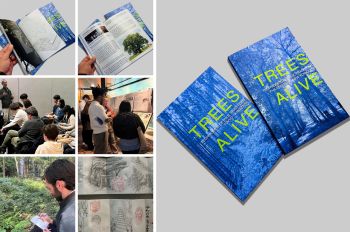Why Public Health Policies Like ‘Wear a Mask, Stay Home’ Are Too Simple

The way that the COVID-19 pandemic upended our lives can clearly be seen in the public policies established to help quash its spread: mask mandates, shelter-in-place orders, and social-distancing guidelines, to name a few. These policies changed what would otherwise be normal, everyday behavior.
Naturally, there were limits to how successful these policies could be. To better understand the ways in which these policies fell short, and to propose how they could be improved in the future, Institute of Design Associate Professor Ruth Schmidt co-authored a paper in Behavioural Public Policy studying the policy response to the pandemic. Specifically, the paper looked at the ways that policies became victims of “brittleness.”
“Behavioral science can often be so precise and lab experiments are catered to seeing really specific things. When you implant these results into the real world, it’s almost like you clear out all the complexity in order to have your lab results make sense,” says Schmidt. “The term ‘brittleness’ recognizes that something built around a specific set of circumstances might look perfectly fine and perfectly stable, but when there are shifts in the real world, what seemed really tidy doesn’t work anymore.”
Schmidt’s paper breaks down three different types of brittleness:
- Contextual brittleness, where policy fails to grasp the different perspectives and interpretations of individuals to whom the policy is directed
- Systemic brittleness, where policy fails to address the ways that different forces may decrease its effectiveness
- Anticipatory brittleness, which concerns unintended consequences from the policy
Did brittle, or unflexible, policies fail us during the COVID-19 pandemic? Schmidt points to mask-wearing mandates as an example. While largely touted as a simple public health directive, Schmidt says many interventions to encourage wearing masks were contextually brittle because they failed to consider how tied to identity mask wearing is. For example, she points out reports of how Black men felt uncomfortable wearing masks for fear of racial profiling. Mask mandates also embodied systemic brittleness because various sources were providing information that varied on national, state, and local levels, even varying from business to business.
“You can't just think of the solution in a vacuum,” says Schmidt. “So when you say ‘Wear a mask,’ it’s not only contextualized by how I perceive that order, but you have all these conflicting sources and ideas about what one should do, when, and how, causing a lack of clarity.”
As for anticipatory brittleness, Schmidt illustrates how shelter-in-place orders have led to upticks in domestic violence and adverse mental health effects for many. As she puts it: “Of course, we aren’t able to predict everything happening, but you kind of could have seen that with people staying home, there were going to be isolation and mental health implications.”
Schmidt’s aim is not to criticize policy, but to understand the current limitations, and how using design methods in policymaking could alleviate unintended consequences, consider the impact of policies on diverse populations, and bring a systems view. For example, prototyping methods could be used to provide more realistic testing of certain policies. In the paper, Schmidt suggests early-stage prototyping as a way to improve vaccination rollout by eliciting feedback while still in the process of creating the ultimate solution. Additionally, participatory design practices that fold in more stakeholder perspectives at earlier stages of design could provide more context in the creation of policy.
“Policy as a whole tends to take a very top-down approach in that it’s made, then dropped down and people respond to it,” says Schmidt. “I think design can play an interesting role by unhinging that model a bit so that the people on the receiving end of policy are not just the recipients but also the co-designers. That process could unearth unanticipated needs and secondary effects earlier in the process of policy creation.”
Schmidt’s paper can be read in full at Cambridge University Press.
Photo: Associate Professor Ruth Schmidt




